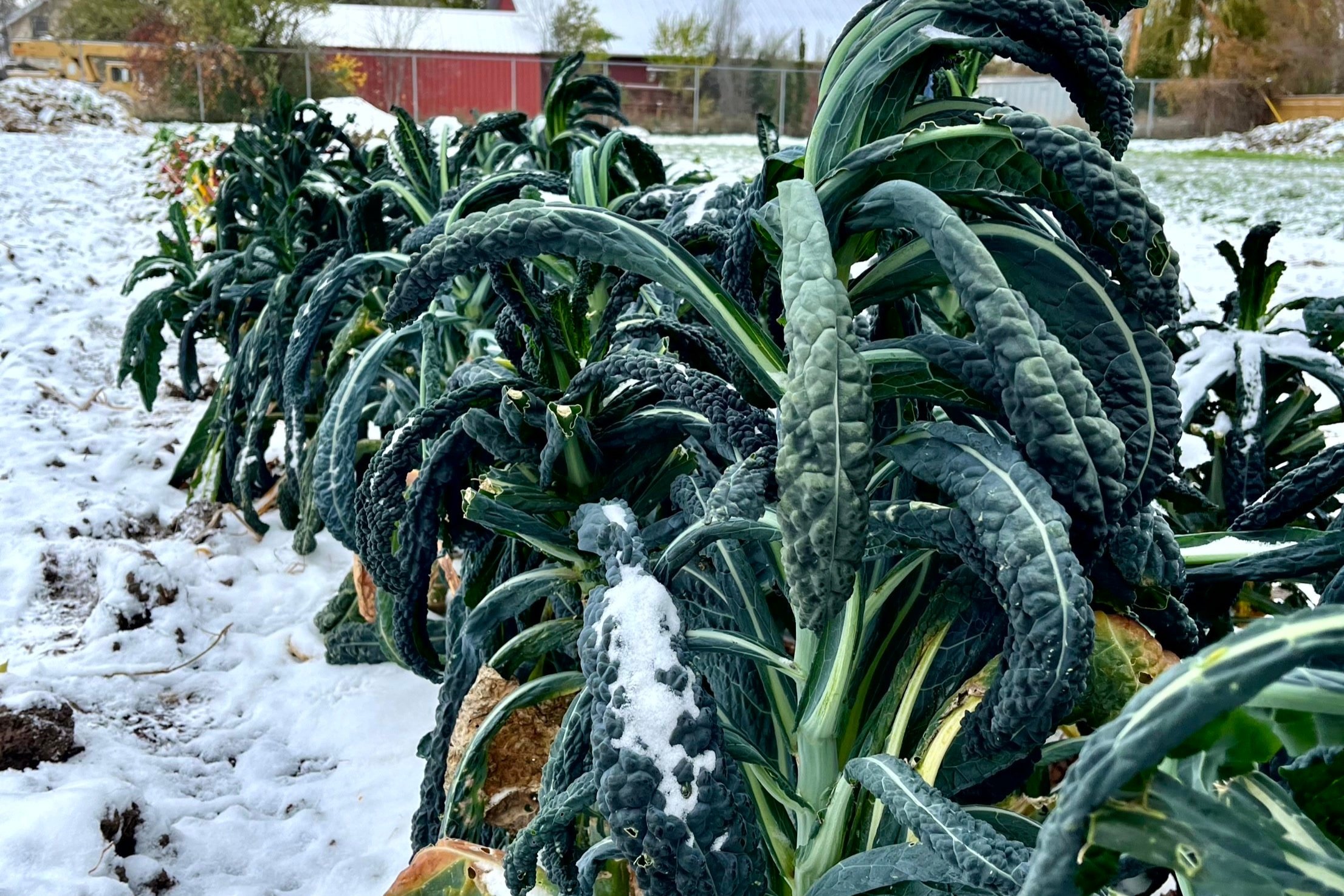What's the Difference Between a Frost and a Freeze?
The fall gardener has to be watching the weather pretty consistently to keep track of their plants. Temperatures even approaching freezing can spell disaster for our most tender crops. What’s the difference between a frost and a freeze, and what does it mean for our vegetable crops?
FROST
“Frost” is technically the ice crystals that form when moisture in the air is converted to ice without first becoming dew. Flashing back to middle school science, this is the cool phenomena of gaseous water converting straight to solid, without first becoming a liquid. There are some factors that go into a frost. First, the air temperature has to drop between 36 and 32 degrees Fahrenheit. Moisture has to be present in the air to form the ice crystals, there has to be little or no wind, and it usually happens on night’s with clear skies.
Colloquially, a “frost” is any time the temperature drops to that 36 - 32 degree range, whether or not we see the ice crystals form. Many plants, our hardiest and cool weather crops, can survive a frost without help from gardeners. Our most tender crops, most of our beloved summer crops like tomatoes, peppers and squash, can also survive these temperatures with a little help from gardeners. Here are some tips to help protect those crops when you see overnight lows between 36 - 32 degrees.
Keep in mind, the severity of frost is dependent on the lowest temperature reached and the length of time the plants have to endure it. For example, you might have observed a browning or burning on the tops or tips of your annual flowers or warm weather crops. This is considered a light frost - neither long enough in time nor cold enough to actually kill the plant, but cold enough to do some damage.
freeze
A “freeze” is anytime the temperature drops below 32 degrees. Within freeze, there are a couple of sub categories.
a light freeze
This is when the temperature drops between 32 - 29 degrees. These freezes will kill our tender plants (think summer crops) but aren’t likely to kill our cool weather crops. With these temperatures, you can still save your crops with the tips linked above.
a hard freeze
A hard freeze is anything within the range of 28 - 25 degrees. A freeze this severe this destructive to most all our crops.
a severe freeze
Also called a “killing freeze” is anything below 24 degrees Fahrenheit. Only our hardiest perennial plants will survive this—anything annual is done for.
When a hard freeze hits, it’s time to call it quits on your gardening season. This is a great time to turn indoors, cook or bake with some of your stored goodies from the season, and to start planning for and dreaming about the next garden season!
Additional Reading:
Pam over at Sustainable Market Farming keeps a “death bed” or a bed of crops she leaves unprotected to track which crops are affected by which temperatures. Check it out here!

